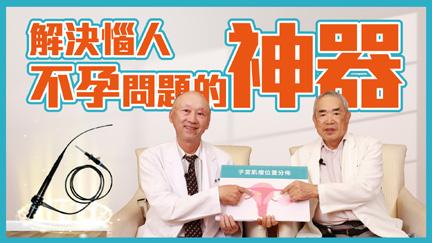
1 minute read
Infertility Examinations
Hysteroscopy Reservation required.

Advertisement
Hysteroscopy can find lesions in the uterine cavity and diagnose uterine diseases such as: endometrial polyps, uterine adhesions, uterine septum, uterine fibroids, and endometrial inflammation, etc.
When is the best time for hysteroscopy?
After menstruation ends and before ovulation, it is about day 7 to day 11 of the menstrual cycle.
Is anesthesia required for hysteroscopy?
With a flexible hysteroscope, anesthesia is not necessary during the procedure.

When is it unsuitable for hysteroscopy?
• When bleeding is heavy, the imaging is unclear and cannot be examined.
• When there is inflammation in the pelvic cavity. This is to avoid a more serious infection.
• During pregnancy. This is to avoid affecting the fetus.
Are there any side effects from hysteroscopy? Is bleeding normal?
• The complication rate of hysteroscopy is very low (the incidence rate is about 0.05% to 1%), and possible complications include uterine perforation, allergy, infection, or hyponatremia.
• It is normal to experience slight vaginal bleeding after a hysteroscopy.
Let's see if the embryo's bed is ready.
Carrier Genetic Test (CGT)
CGT is a pre-pregnancy genetic test for hereditary diseases that only requires a blood draw. It is used to check if a couple is likely to pass a genetic disorder on to their children. Through WES analysis, more than 2,200 monogenetic disorders such as cystic fibrosis, spinal muscular atrophy, and fragile X syndrome can be detected. According to the test results, you can choose to conceive naturally or undergo IVF treatment to screen out healthy embryos through PGT-M (PGD), thereby reducing the risk of giving birth to a baby with genetic abnormalities.
One in 100 live births has monogenic disorders.
Golden age of female fertility
• 21 to 25 years old is the peak of a female’s reproductive period.


• 30 years old If you have not been pregnant for a year, infertility examinations are recommended.
• 35 years old If you have not been pregnant for half a year, infertility examinations are required.
• 37 years old Please take an infertility examinations.
• 38 years old Please undergo infertility examinations and actively receive treatments.
AMH
AMH, short for Anti-Müllerian Hormone, is secreted by immature follicles in the ovaries. It is the indicator of ovarian reserve. Ovarian function is the key factor affecting pregnancy, therefore AMH level is an important indicator for predicting the success rate of IUI and IVF treatments.
The overall condition needs to be evaluated along with other blood test results.
The AMH test is not affected by menstruation and can be tested at any time.
Reference for 35 years old females:
AMH <2
AMH 2-5
AMH >5
Premature ovarian failure (POF)

Normal
Possible be Polycystic Ovary Syndrome (POS)
POS requires a comprehensive evaluation and diagnosis by infertility physicians.








